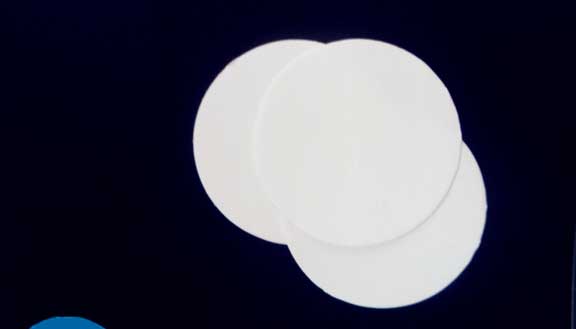Ultrafiltration Membrane
Ultrafiltration Membrane
Ultrafiltration membrane is microporous membrane, with a consistent pore size, which ranges of nominal 0.001 to 0.02 micron. Ultrafiltration membrane using pressure difference driven membrane filtration method is ultrafiltration. With the membrane pore size range as the standard pressure difference divides into: microporous membrane (MF) rated pore size in the range of 0.02 ~ 10╬╝m; ultrafiltration membrane (UF) is 0.001 ~ 0.02╬╝m; reverse osmosis membrane (RO) is 0.0001 ~ 0.001╬╝m. Ultrafiltration membrane pore size of only a few nanometers to several tens of nanometers, which means applying appropriate pressure on one side of the membrane, you can screen out larger than the pore size of solute molecules, to isolate molecular weight greater than 500 Daltons, diameter greater than 2 ~ 20 nm particles.Ultrafiltration membrane structure is symmetric and asymmetric division. The former is isotropic, with no cortical porosity in all directions are the same, are deep filter; the latter has a more dense surface layer and in the underlying structure of the main finger surface layer having a thickness of 0.1 microns or less, having micropores and arranged in order, substrate thickness of 200 to 250 microns below the surface of the filter. Industrial ultrafiltration membrane is generally used asymmetric membrane.
Ultrafiltration membraneis generally as a polymer ultrafiltration membrane, materials are cellulose derivatives (e.g.: acetate fiber or the like thereto performance polymer material), polysulfone, polyacrylonitrile, polyamide , polysulfone, sulfonated polysulfone, cross-linked polyvinyl alcohol, a modified acrylic polymer and so on. It can be seen, the most suitable ultrafiltration membrane Wright Ryder was isolated and enriched solute, or by other separation techniques are difficult to complete the separation process colloidal suspension. PTFE (polytetrafluoroethylene): suitable for a variety of aqueous and organic solvents, resistant to all solvents, low solubility. With a breathable waterproof, gas flux, high particle retention rate, temperature resistance, anti-acid, alkali, organic solvent and an oxidant, anti-aging and non-stick, non-flammable and non-toxic, biocompatible and so on. Related products widely used in chemical, pharmaceutical, environmental protection, electronics, food, energy and other fields. River PES (polyether sulfone): high chemical and thermal stability, flow speed, strong acid (pH range 1-14); with high mechanical strength. Aqueous CA (cellulose acetate): for aqueous, low protein adsorption, high flow rate, high thermal stability, does not apply to an organic solvent, particularly suitable for water-based solution. Organic Nylon: good hydrophilic, acid and alkali, anti-oxidants. It applies not only to an aqueous solution containing a pH, more suitable for containing an organic solvent, such as alcohols, hydrocarbons, lipids, phenols, ketones and other organic solvents. Organic Nylon: for most organic solvents and aqueous solutions can be used in strong acid, 70% ethanol, methylene chloride and other organic solvents. High temperature, good strength.
Zhengzhou Toper cpmpany supply different types membranes, kindly contact with our people to give you a right type to satisfy your filtration requirments. Toper is always the expert in problem solving.
Request a quotation
Feedback Form
Contact E-Mail: toperkey@hi-toper.com

